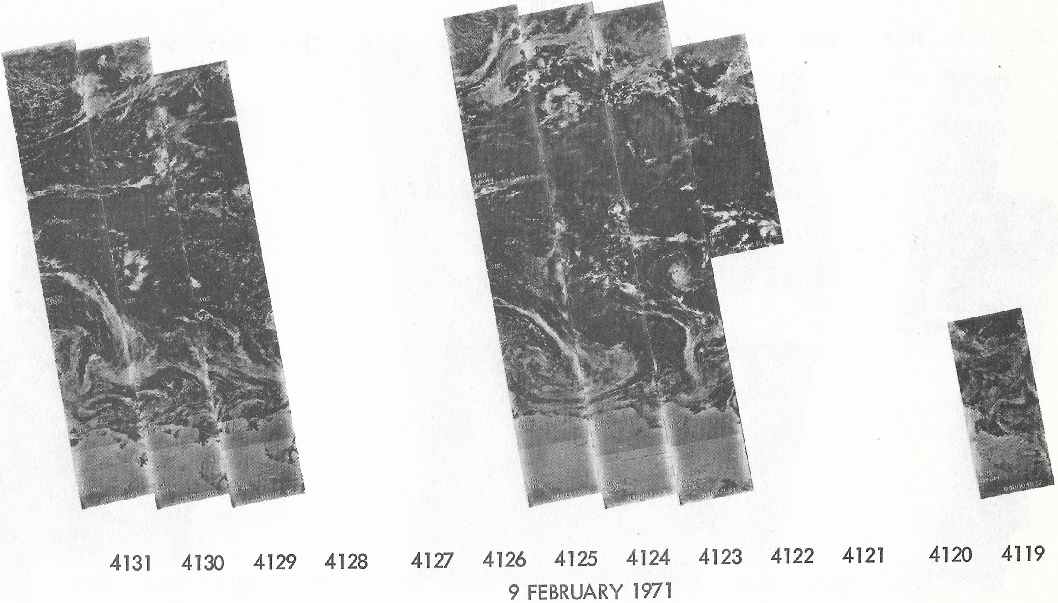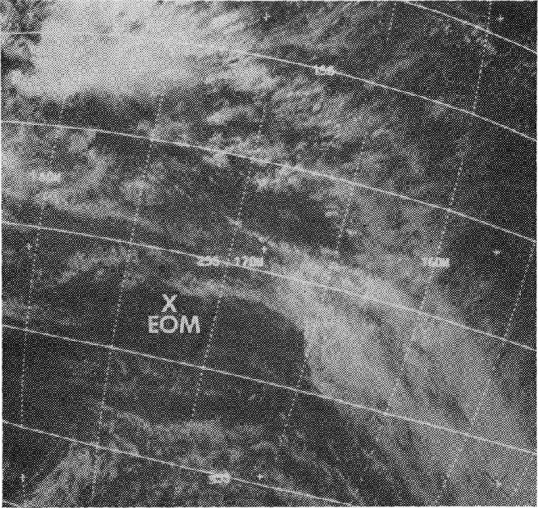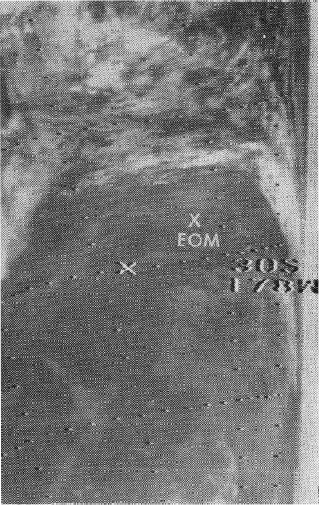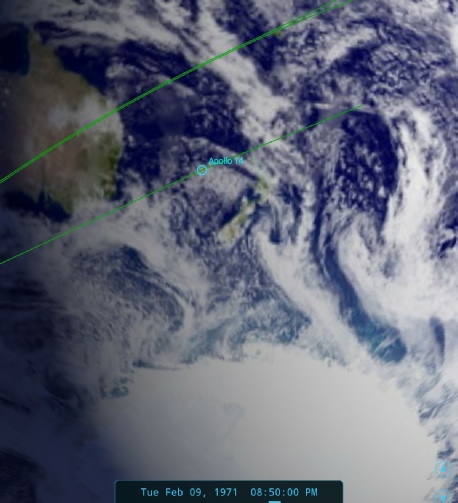4.6.10 - Apollo 14 - Re-entry
We have one more opportunity to examine the weather on the way home from the moon, namely in the very last leg of the journey from re-entry to splashdown. During the re-entry phase the 16mm camera was set running while mounted in the LMP window, which would have been on the left side of the craft facing backwards during the re-entry process. The camera was set running at around 215:44 (around 20:47 GMT on 09/02/71). The main chutes opened around 16 minutes later.
This youtube video shows the footage taken, with the drogue chutes opening at 04:10 and the full chutes opening at 05:00.
The point of re-entry and splashdown is well documented, as is the time, and from this we know that the ESSA image from February the 9th is the correct one to use, as the time of the satellite pass would roughly match that of re-entry. Figure 4.6.10.1 below shows two key stills from the 16mm footage compared with the ESSA view, with the approximate re-entry and splashdown points marked on. The arrow shows the direction of travel. ITOS and NIMBUS images from an article mentioned in the introduction show them more precisely.





Figure 4.6.10.2: ESSA (top centre), ITOS-1 (bottom left) and NIMBUS-4 (bottom right) views of the re-entry corridor dated 09/02/71 together with stills from Apollo 14 re-entry footage. SkySafari depiction of re-entry corridor bottom right, with position at re-entry marked.
The still shown on the left is the earliest of the two, and the direction of the frames before and after both of the stills shown suggest that we are looking towards the west. Such is the nature of the clouds beneath Apollo 14 that it is difficult to be certain exactly what system we are looking at, nor is it easy to work out how far into the distance we are looking.
That said it isn’t unreasonable to suggest that what we are looking at is consistent with the weather systems along the corridor, particularly those about half way between the ‘official’ point of re-entry and splashdown. Given that the splashdown was also recorded on TV, you’d have to be a particularly dumb individual to claim it didn’t happen!
The preceding analyses represent all that can be examined for Apollo 14. It is conceded that there is an element of doubt over them, such is the poor quality of the images available. If the only source of data available were the satellite and Apollo images, it would have been extremely difficult to derive timings for any of the images based on observed weather systems, but the availability of other sources (notably the mission audio and transcripts) allow some certainty to be gained. We also have the invaluable evidence provided by Venus.
The reader is, as always, invited to perform their own analyses from the available data. As the crescent Earth is so thin for most of the mission photographs and the weather systems less than clear, it was decided that a comparison of synoptic charts would serve little purpose, and so the discussion of Apollo 14 ends here.




